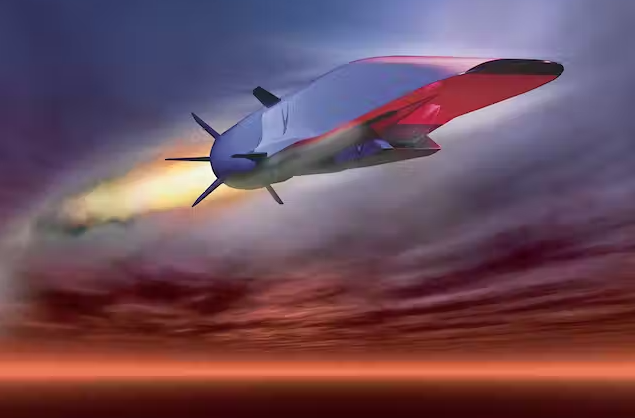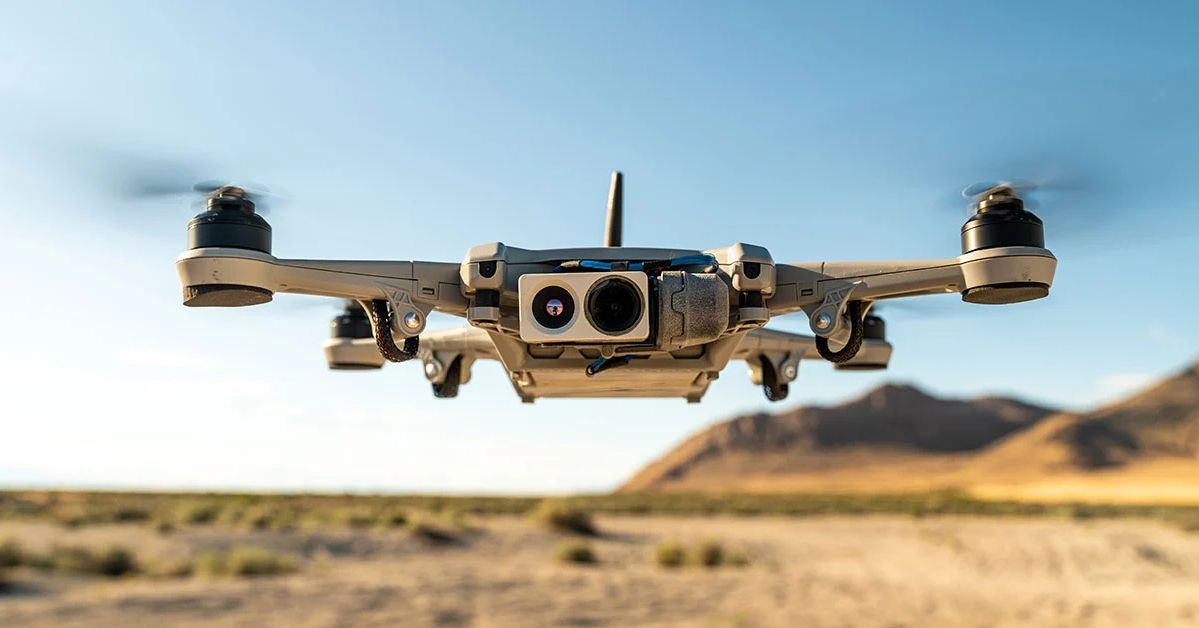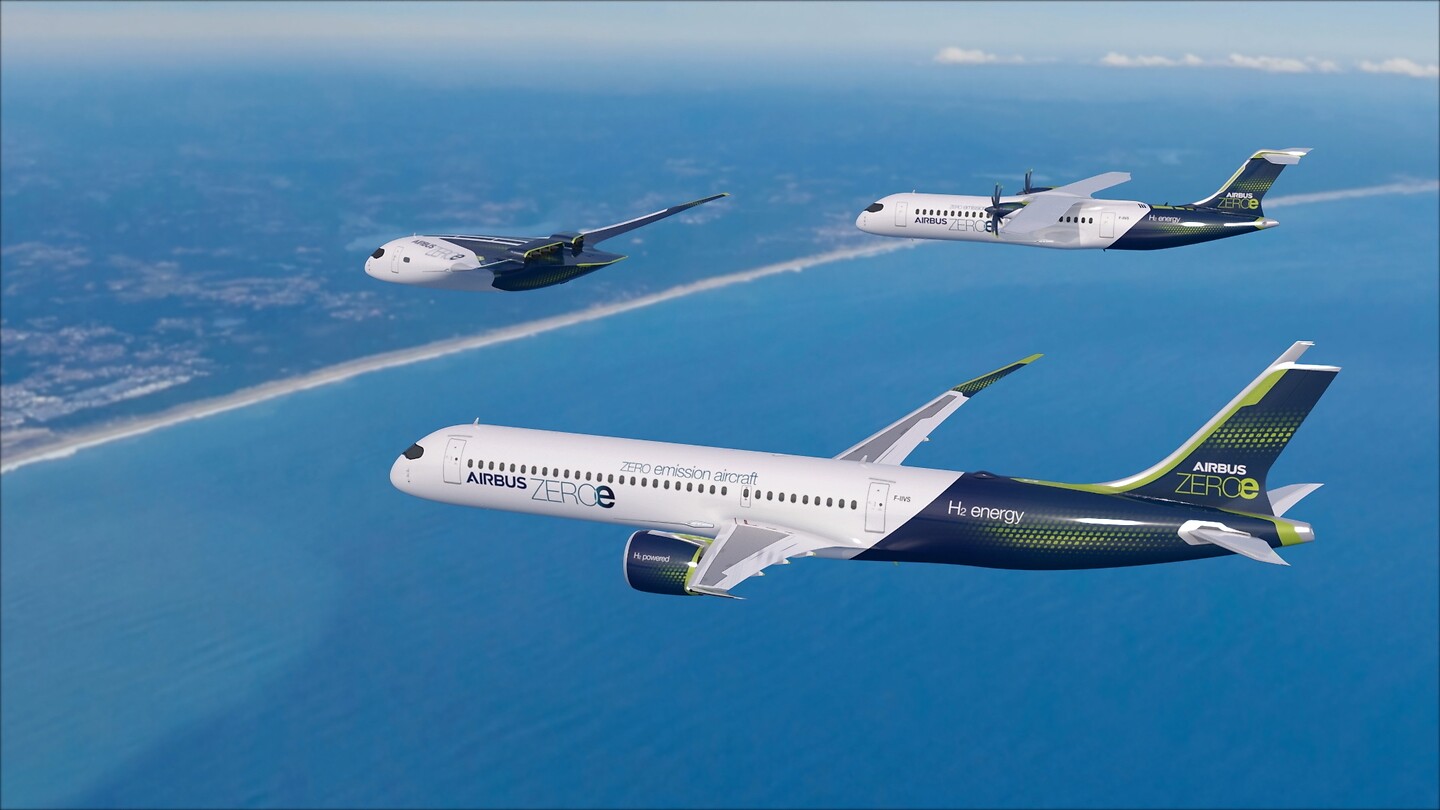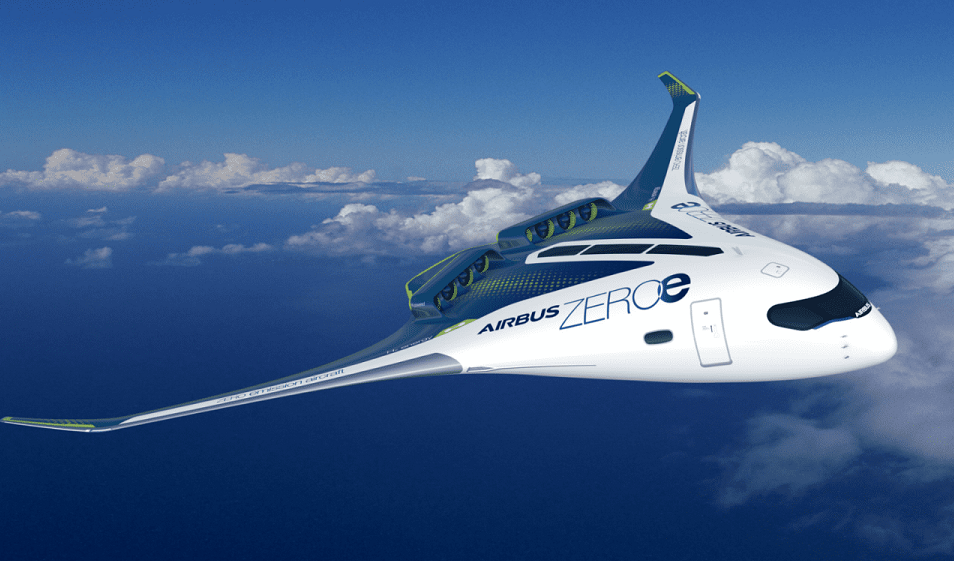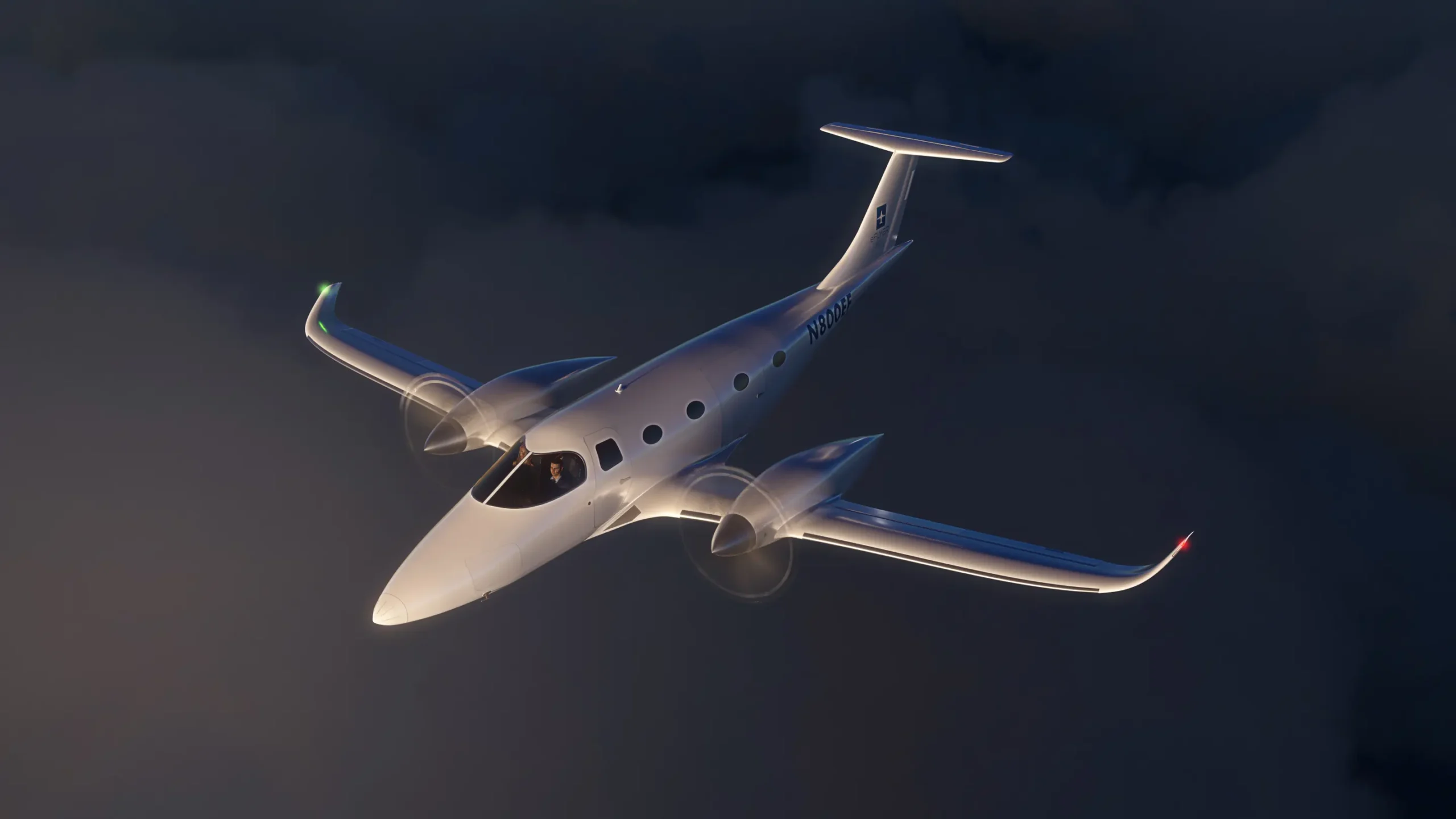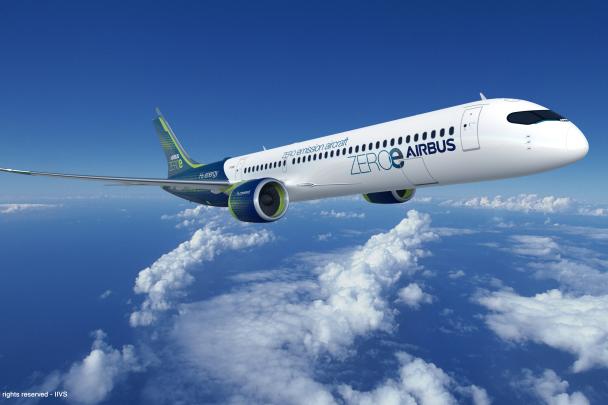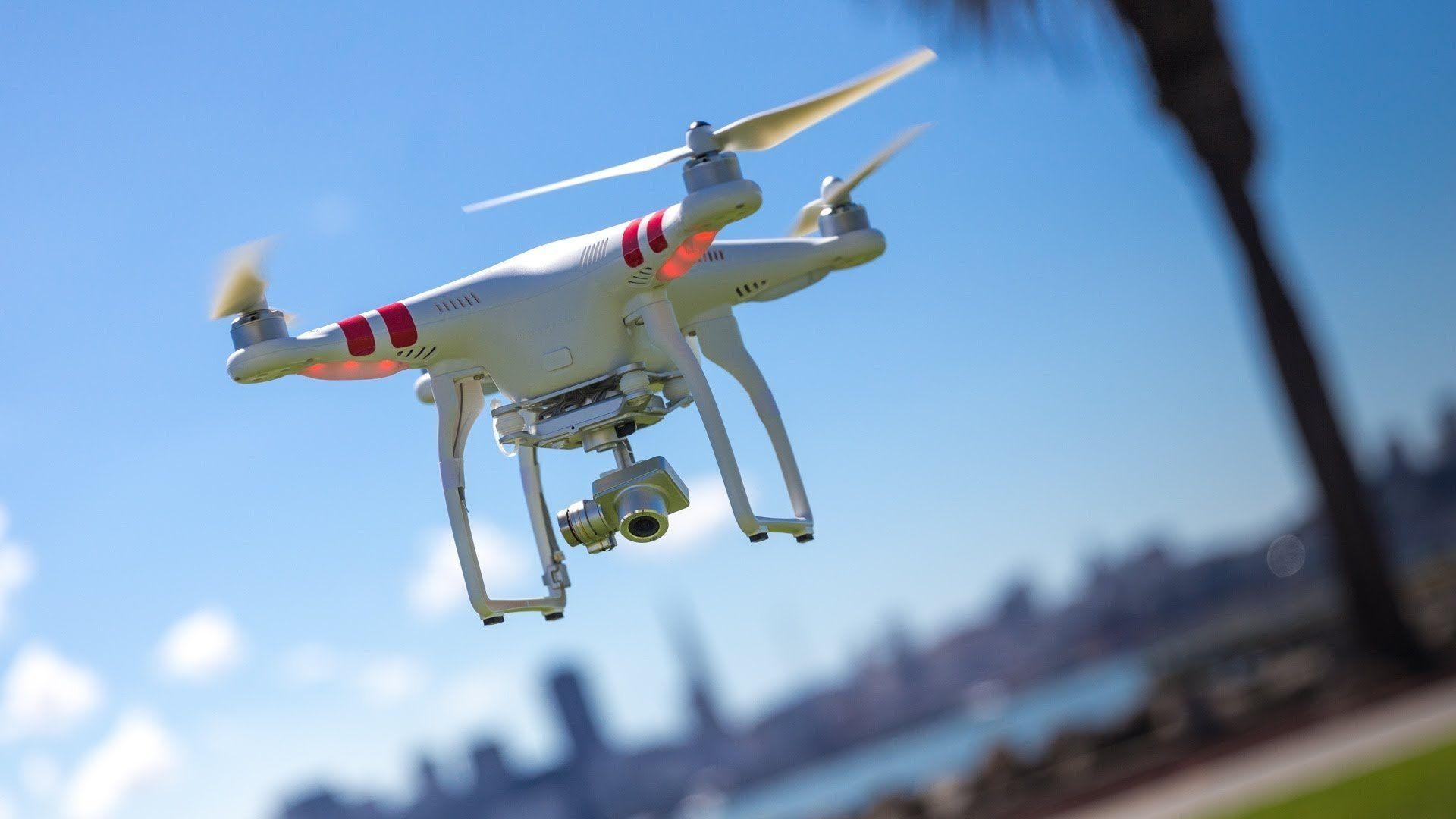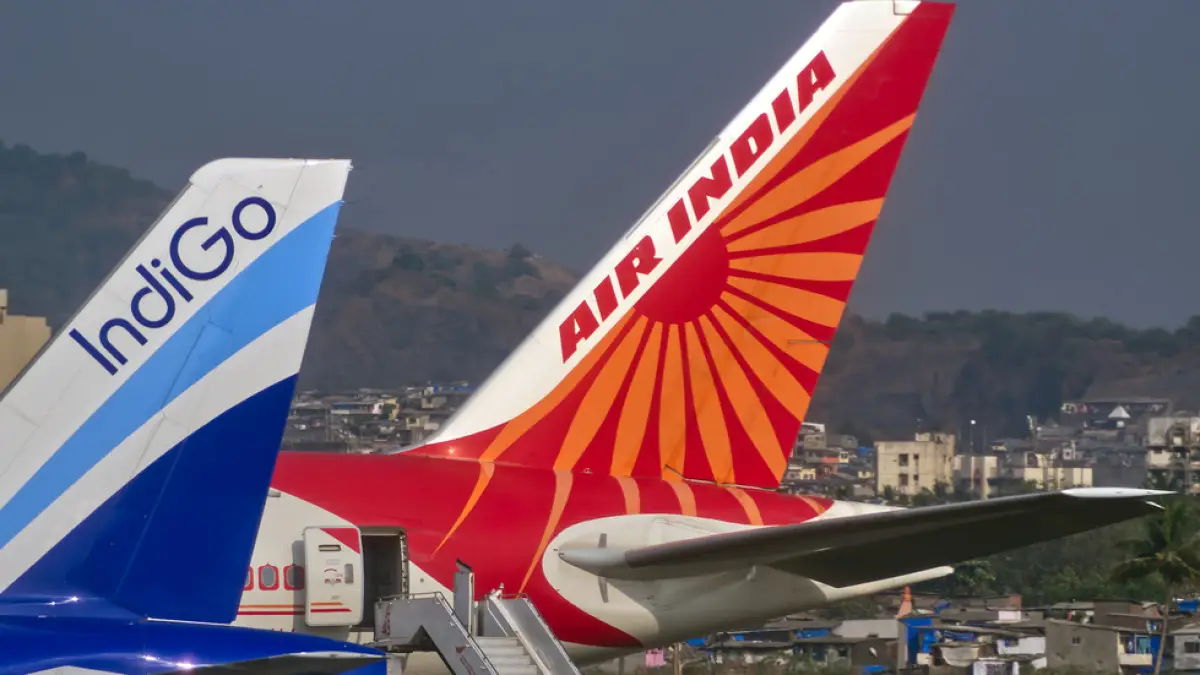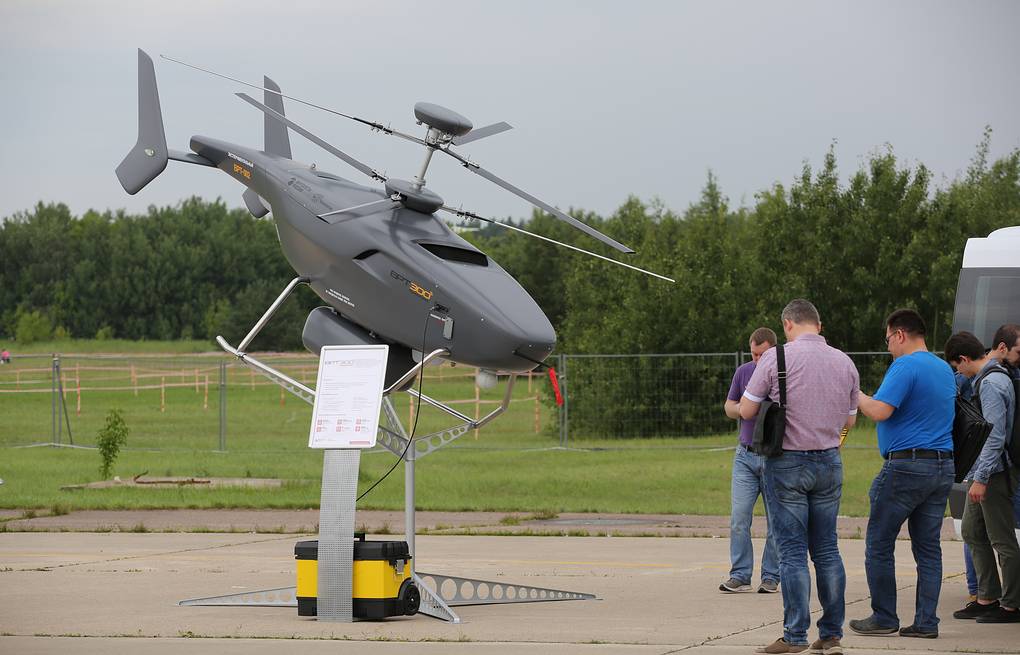207
Points
Questions
7
Answers
10
-
Asked on 14th January 2023 in UAV.
China and Russia are the two countries which have successfully tested hypersonic missiles. Hypersonic missiles are the missiles which are flying below 90 km in the atmosphere at a speed of Mach number 5 and above. Mach number means the speed of an object with respect to the speed of sound. A Mach 5 missile will be flying at a speed of 5 times the speed of sound.
At a high speed there is a large generation of heat on the surface of the missile which leads to a very high heat load. Air which consists of molecules begin to dissociate at this very high speed. Speed above Mach 25 has been achieved in the atmosphere. This speed is of the space shuttle and spacecraft which return to earth after completing the orbit around it.
Hypersonic cruise missile and hypersonic glide vehicles at present are the two technologies which can travel at hypersonic speed. Hypersonic cruise missiles are powered by Scramjet engines. Scramjet engines are air breathing engines which do not have any moving parts. It is an advanced version of Ramjet engine where the combustion is entirely supersonic, so is the name Supersonic Combustion Ramjet engine.
France, India, Australia, Germany and Japan have hypersonic research programs.
- 873 views
- 1 answers
- 2 votes
-
Asked on 6th September 2022 in No Category.
Space tech startup Skyroot Aerospace has announced that it has raised US$51 million (Rs 430 crore) in its Series B round. The funding has been led by Singapore-based GIC, whose managing director Mayank Rawat will join Skyroot’s board.
Startups are using modern means to expand their engineering teams. The company currently employs about 200 people, the company said.
The Hyderabad-based startup claimed in its release to the press that it was the most significant and lucrative funding round ever in India’s space technology sector. By comparison, several high-profile companies like Chennai-based Agnikul Cosmos have raised $11 million in Series A funding, while Dhruva Aerospace has secured $2.7 million.
Former ISRO engineers Pawan Kumar Chandana and Naga Bharat Daka founded the startup in 2018 with the aim of meeting the growing demand of the international small satellite market.
Pawan Kumar Chandana said, “This round will fund all of our early development launches and enable us to build the infrastructure to meet the high launch frequencies demanded by our satellite customers. In January 2022, it has also raised $4.5 million in a Series B bridge round led by early Google investor Ram Shriram through venture capital firm Sherpalo Ventures.
Rothschild & Co India was the financial advisor for this round of funding.
Simultaneously with funding, the startup is working on the country’s first privately developed rocket. The Vikram series rockets are built with all-carbon fiber and are capable of carrying payloads of up to 800 kg into Low Earth Orbit (LEO).
- 0 views
- 359 answers
- 0 votes
-
Asked on 31st August 2022 in No Category.
With the support of AIAA, ASCEND is a collaborative, interdisciplinary, results-driven community of professionals, students, and enthusiasts from around the world who are accelerating human progress toward an extraterrestrial future.
ASCEND, the world’s leading results-driven, interdisciplinary space event aimed at accelerating the construction of the off-world future, takes place today October 24-26 at the Caesars Forum in Las Vegas and announced the agenda for the 2022 ASCEND Apex event, which will take place online. The three-day program is packed with speakers from leading space organizations and related industries, including Axiom Space, Barclays Capital, Maxar Technologies, MIT, NASA and SpaceX. Through more than 147 sessions across 16 space themes, speakers and attendees will tackle key issues and explore exciting opportunities in low earth orbit and beyond, also involving
Space Traffic Management and Coordination
Sustainable Space Exploration
Outpacing the Space Threat
Using Space to Protect Our Planet
A Competitive and Burgeoning Space Economy
Developing the Space Workforce of Tomorrow
The Future of Cislunar and Lunar Exploration
Fortune 500 executives, senior space agency executives, government and military officials, professional and private astronauts, new space companies, international organizations, university professors and students, startup CEOs, and more will give their views and presentations. In addition to the opening speakers, ASCEND 2022 will have over 250 speakers.
- 0 views
- 359 answers
- 0 votes
-
Asked on 29th August 2022 in No Category.
Garuda Aerospace was invited by the Army to send a technical team to modify it and help it complete its mission on schedule. Drone startup Garuda Aerospace will provide the military with multipurpose drones to conduct strategic and tactical operations, the company said Thursday.
Garuda Aerospace has been requested by the Army to send a technical team to make modifications and help them maintain schedules and operations to complete the mission. The Army has expressed a keen interest in utilizing his Garuda Aerospace expertise and technical knowledge in the field of drone technology to use drones more effectively, the company said here. said in a statement. The Army intends to enhance the effectiveness of its special missions by promoting the use of drones in routine operations and detecting and destroying transnational organized crime networks, it said. Garuda Aerospace has generated significant traction in the use of drones for unique applications in support of the Indian Army and is currently deploying multipurpose drones for strategic and tactical operations. Together we can also meet defense needs . Aviation Startup Offers Multipurpose Drones for Army Army Plans to Promote Use of Drones in Daily Operations.
Drone startup Garuda Aerospace will provide the army with multi-purpose drones for strategic and tactical operations, the company said on Thursday. Garuda Aerospace has dispatched a technical team from the army. I have been asked to make modifications and help them maintain schedules and operations to complete their missions. The Army has expressed a strong interest in utilizing Garuda Aerospace’s expertise and technical knowledge in the field of drone technology to more effectively use drones, the company said in a statement here. Stated. The Army intends to enhance the effectiveness of its special missions by promoting the use of drones in routine operations and detecting and destroying transnational organized crime networks, it said. Garuda Aerospace has generated significant traction in the use of drones for unique applications in support of the Indian Army and will be deploying multipurpose drones for strategic and tactical operations in the future.
- 0 views
- 359 answers
- 0 votes
-
Asked on 29th August 2022 in No Category.
With the Artemis mission, NASA will use innovative technology to explore more of the moon’s surface than ever before, landing the first woman and the first black man on the moon. We work with commercial and international partners to establish our first long-term presence on the moon. Return in May for scientific discoveries, financial gains, and inspiration for a new generation of explorers, the Artemis Generation. Forge global alliances and explore space for all good while maintaining America’s leadership in exploration. Artemis Base Camp on the surface and Gateway in lunar orbit. These elements allow robots and astronauts to explore more and do more science than ever before.
NASA will launch its first lunar rocket in the Artemis program on Monday morning. This is the first step in a complex series of missions aimed at enabling continued human exploration of the Moon and ultimately Mars.
Artemis I, the mission will send an unmanned capsule over her 42-day moon before splattering it into the Pacific Ocean. This operation will launch the first of the Space Launch Systems program.
Here’s what you need to know about the launch.
Artemis I’s main priority: Testing Orion’s new heat shield as it re-enters Earth’s atmosphere at 40,000 km/h. Pods must survive the fiery descent during the process. If all goes according to plan with the 322-foot rocket, the Artemis II mission will do much the same, but with astronauts on board. Artemis III then aims to send her two astronauts to the moon after 2025. It’s part of his NASA plan to put humans back on the moon for the first time since 1972, according to the budget. Each launch will cost the taxpayer his $4.1 billion, according to the Office of the Inspector General, NASA’s internal oversight agency.
At the tip of the rocket is the Orion Space Capsule, which carries special mannequins (Moonkin Campos, Helga and Zohar) to collect data on the stress the mission will place on future astronauts. About eight hours after launch, the spacecraft will deorbit and begin its 250,000-mile journey to the moon. If all goes well, it will orbit the Moon for over a month before returning to Earth and landing in San Diego.
Her two-hour launch window at Kennedy Space Center begins at 8:33 a.m.
- 0 views
- 359 answers
- 0 votes
-
Asked on 29th August 2022 in Others.
Achieving net zero flights by 2050 will be very difficult, but it is possible, argues Harry Mullins, chief innovation officer at the Aerospace Technology Institute (ATI).
His talk of a CO2-free future in aviation is buzzing. In July, the Farnborough Air Show was held in person for the first time in four years, coinciding with record temperatures in the UK. At the show, we heard a lot about reaching net zero in aviation, including the announcement of the Jet Zero strategy and his latest AGP strategy, as well as countless sustainability announcements from companies big and small.
We are also seeing the usual flurry of trading, indicating that order volumes are about to recover in a sector that has been notoriously difficult for several years. When the newspapers are filled with headlines about travel disruptions, rising fuel prices and climate change, it’s easy to be pessimistic about the future of aviation.
In a world without limits, more people will fly than they do now. Estimates vary, but in any “normal year” only 6% of the world’s population could fly. Many people do not fly. A huge amount of unlimited demand if you use the broad definition of unlimited.
Of course, some people don’t fly for health reasons, safety reasons, or simply because they don’t like the experience. But for many, traditional barriers to flying were affordable. For this reason, as global GDP has increased in recent decades and the cost of air travel has fallen dramatically, passenger numbers have gone from about 500 million in the early 1970s to about 4.5 billion in 2019. People have surged.
People want to fly safely, comfortably and affordably. Before the Covid travel bans, the main barrier to more people flying was cost. But in recent years there have been additional restrictions – not just the travel bans mentioned above, but also environmental concerns. In a world where it is possible, there is a risk that people and organizations will make decisions to reduce travel. Just 1% of the world’s population accounts for about half of aviation emissions, and this 1% is increasingly aware of its impact.
The mission of the aviation ecosystem must be to remove these limitations – to provide vehicles, infrastructure and services that make flying affordable, safe, green and comfortable. As the industry becomes able to offer cheaper and greener aircraft, headwinds such as environmental concerns and rising fuel prices are driving airlines to rebuild their fleets to be more sustainable and reduce costs. , will be a tailwind. This is also a huge opportunity for UK industry, a much more attractive job offer than the aerospace industry has offered so far.
But are we going fast enough?
The aerospace sector is at a critical time right now. The challenge is to reach net zero carbon emissions by 2050. Without action, the sector’s emissions are expected to rise from 2% to 25% of global emissions over this period. Assuming the industry returns to its pre-Covid growth trend, annual kerosene consumption will more than double by 2050 if no action is taken.
For some, the challenge was too great and fewer people flew. The technology is too immature, the investment needs too great, and the timeframe too short.
I tend to disagree with this assessment.
Underestimate the ability of investment and good technology to produce innovative solutions. They also have trouble seeing the current state of affairs and understanding how that state of affairs will change in 20 or 30 years. They conclude that this is not possible given the scale of growth required, forgetting that rapid scaling has been achieved before (cf. oil, rail, air travel).
But you have to be realistic about the scale of what I recently described as a “very bad” problem. This means that not only does it represent a major organizational challenge, but the more time runs out and the longer you wait to do it, the more difficult it becomes. Our Institute of Aerospace Engineering has carefully considered this issue. The latest edition of the UK Aerospace Strategy, published in April, incorporates input from dozens across the advisory network and outlines a combination of measures that will bring net zero flights by 2050. . The main “needle movers” are the development of highly efficient aircraft technology, the use of synthetic aviation fuels (both synthetic and biological) and, most importantly, the development of zero-carbon aircraft technology. I would like to talk about each area.
First, high-efficiency technology focused on improving energy efficiency. Examples include the development of next-generation ultra-high-bypass turbofan engines and lightweight, high-performance wing structures and integrated systems made from composite materials. Highest efficiency is desired regardless of fuel source. In addition to environmental benefits (including beyond CO2), there are also economic benefits that reduce flight costs. And I believe it will happen because super efficiency makes sense for any fuel type and has clear and understandable economic benefits.The logic is clear to the industry and the demand signal is understandable. It’s easy. Indeed, the aviation industry has invested heavily in developing highly efficient technology that makes air travel a more enjoyable, affordable and sustainable experience.
SAF basically refers to aviation fuels from non-fossil carbon sources, such as biofuels from biomass and synthetic fuels from CO2 capture, with the energy produced ideally coming from renewable sources. . SAFs offset carbon emissions from producing or recovering raw materials, making them fully or partially carbon neutral.
SAF is already deployed in commercial aircraft, but its use is limited to low blends with kerosene, with less than 0.1% global uptake, said to play a key role in decarbonizing the sector. Challenging, but not unattainable. When oil was taken seriously, it probably took 35 years for it to reach the same scale. work needs to be done to make it interoperable with His future SAF supply chain will require logistics and mixing facilities that can scale to hundreds of millions of tons.
One of the challenges with SAF is that manufacturers claim they can scale up production and cut costs significantly if they get good demand signals from airlines. The problem is that the airline needs to bring costs down to commit to his SAFs in bulk.
Sustainability is also questionable. For example, SAF does not actually result in zero carbon in the tailpipe. It relies on his CO2 capture and storage, a technology that is still in its infancy.
We also need to ensure that the production of SAF is sustainable in terms of raw materials. For example, the biomass available for sustainably producing SAF is limited.
Another problem, which also applies to hydrogen burned in gas turbines, is that it still produces nitrogen oxides, which poses a significant environmental burden.
Most of the work in this area is aimed at decarbonizing flight, but there are still many open questions about non-CO2 emissions and contrails, for example. But achieving net zero 2050 requires the adoption of SAF, so we need to find the answer.
What about zero carbon technology? This is where we really step into the transformation of the industry. In the urban air mobility space, companies like Vertical are driving incredible advances in electric aviation. The possibilities are very exciting, and you may find that the way we travel has changed dramatically in the last 10 or 20 years. It’s also great to see startups enter the industry in meaningful ways.
But from a sustainability point of view, I think urban air mobility will largely offset the impact of other subregional modes of transport, especially road transport. Electric aircraft cannot reach the larger end of commercial aviation. At least not in the foreseeable future.
What about hydrogen? You may have heard of FlyZero. His FlyZero, an ATI project, has brought together his 100 experts from across UK industry for just 12 months to study the technical and commercial feasibility of zero his carbon commercial flight . Participants included officials from 34 different industry partners and suppliers, 5 airports, 3 airlines, 16 universities and research institutes.
FlyZero has researched the basics of several energy sources, including batteries, liquid hydrogen fuel cells, liquid hydrogen combustion, gaseous hydrogen combustion, ammonia, and SAF. The project concluded that liquid hydrogen produced by renewable energy is the only jet fuel capable of delivering significant long-term growth in the regional, narrowbody and midsize segments. FlyZero has determined that liquid hydrogen-powered aircraft are not only technically feasible, but are expected to demonstrate excellent operational economics by the mid-2030s.
This discovery surprised me, but it’s true.
The cost of liquid hydrogen is expected to fall rapidly due to increased supply, technological advances, especially falling costs of renewable energy, and production efficiency. Hydrogen’s cost advantage will be accelerated by rising carbon prices for kerosene and SAF blended in kerosene.
However, there are major obstacles to the development and deployment of hydrogen-powered flight. As with SAF, environmental impacts other than CO2 are not well understood and much work needs to be done on climate science.
Similar to the SAF, there are challenges in fuel production. You will need a fairly large amount of green hydrogen. We also need to increase our liquefaction capacity by several orders of magnitude (in fact, there is currently no hydrogen liquefaction capacity in the UK, and very little for liquid hydrogen outside of Buxton’s Department of Health and Safety).
Airport infrastructure also needs to be improved. This is expensive and requires a lot of space (and/or a lot of tank trucks).
We also need to independently develop aerospace technologies such as liquid hydrogen gas turbines, hydrogen fuel systems, hydrogen tanks, fuel cells, thermal management and electrical systems, and aerodynamic structures. These are currently less mature technologies that require investment and a test infrastructure to support them.
You also need the correct signal. A lot of this has to do with the economy. The aerospace sector must commit to moving airlines to hydrogen-fueled fleets, and airlines must have their own demand signals. Ultimately, we must be confident that the introduction of zero-carbon aircraft will provide competitive, affordable and safe services. , convenient and environmentally friendly. Markets need to be accessible.
So, will we be able to provide affordable, comfortable, safe and environmentally friendly services to more than 6% of the world’s population by 2050? I think we have a challenge and I know this will make this industry a great and exciting place to work for decades to come. This is an edited version of a speech given by Harry Mullins at a dinner event hosted by Industrial Practice.
- 135 views
- 1 answers
- 0 votes
-
Asked on 25th August 2022 in No Category.
A small British start-up wants to make a small history as one of the pioneers of commercial electrified aviation. The company plans to develop and market hybrid-electric aircraft for the regional aviation market. It can accommodate up to 19 people and is powered by a fan powered by an electric motor. A small gas turbine provides the necessary power.
It also has a trilobate wing to increase lift and enable takeoff and landing from short runways. This makes it resemble a World War I fighter despite its cutting-edge aerodynamics.
Such aircraft have far fewer moving parts than traditional propeller aircraft and therefore have lower operating costs. It’s also much quieter and produces less emissions.
A fuel efficient, affordable, quiet and sustainable aircraft. On the other hand, in remote or inaccessible areas, such aircraft can become a lifeline for transportation on small runways, avoiding the need for large investments in roads and rail.
California start-up Wright Electric, for example, plans to operate a 100-seat all-electric aircraft by the mid-2000s. It is based on his existing Bae 146, replacing the four turbofan engines with electric motors.
The plane will be used on his one-hour flights, including London-Paris, New York-Washington and Hong Kong-Taipei, according to the company that partners with EasyJet.
However, in testing, the aircraft functions as a hybrid. Initially, only one of the four motors will be replaced with an electric motor. If the test is successful, the rest of the engines will follow.
According to Wright Electric CEO Jeffrey Engler, potential customers see this as a good approach once the aircraft goes into production. The main reason the aircraft are so difficult to electrify that even the best batteries have far less energy per kilogram than conventional aviation fuel and are too heavy to power long-range commercial aircraft.
“The specific energy of today’s batteries is far from what is needed.” has been researching the potential of electric and hybrid aviation since the mid-1990s, and over a decade ago the first 2 I flew the e-Genius, a human-riding electrical testing machine.
He believes that today’s technology will make it possible to build small, lightweight electric planes with up to six seats.
It is possible to build a pure battery-powered large commuter plane with up to 19 seats, but that is “the limit of what is currently feasible”.
Alice, his nine-seater aircraft developed by the Israeli company Eviation, fits into this category. The aircraft, which has been in development for several years, is said to be capable of flying up to 600 miles on electricity alone. Anything larger than the must be a hybrid, combining an electric motor with a conventional engine or an on-board generator. Both types of aircraft have the potential to build new air traffic networks. Small all-electric aircraft carry passengers in short hops from local airports to regional hubs. Large hybrid aircraft are available and can be used for trips up to 500 km.
“There will be a denser air traffic network,” he explains. “Most useful in areas like Scandinavia and in mountainous areas where high-speed rail networks cannot really be built. Eviation is planning its first test flight with Alice, the E-Fan X, this summer. As with the existing light electric project on the Bae 146-base.
However, this program was discontinued after three years. Sandra Borscheffer, her CEO of Airbus UpNext, which is responsible for researching new technologies, believes the decision was right.
“Our goal is to be carbon neutral by 2050,” she says. In the short term, the company will use renewable resources and sustainable aviation fuel from waste. and focus on reducing emissions. Airbus is also eyeing the use of hydrogen to power a new generation of clean aircraft.
“Our goal is to have the first zero-emission hydrogen-based commercial aircraft on the market by 2035,” she explains.
“I already have a team working on cryogenic and superconducting technology. The following are currently under investigation.”
- 0 views
- 359 answers
- 0 votes
-
Asked on 25th August 2022 in No Category.
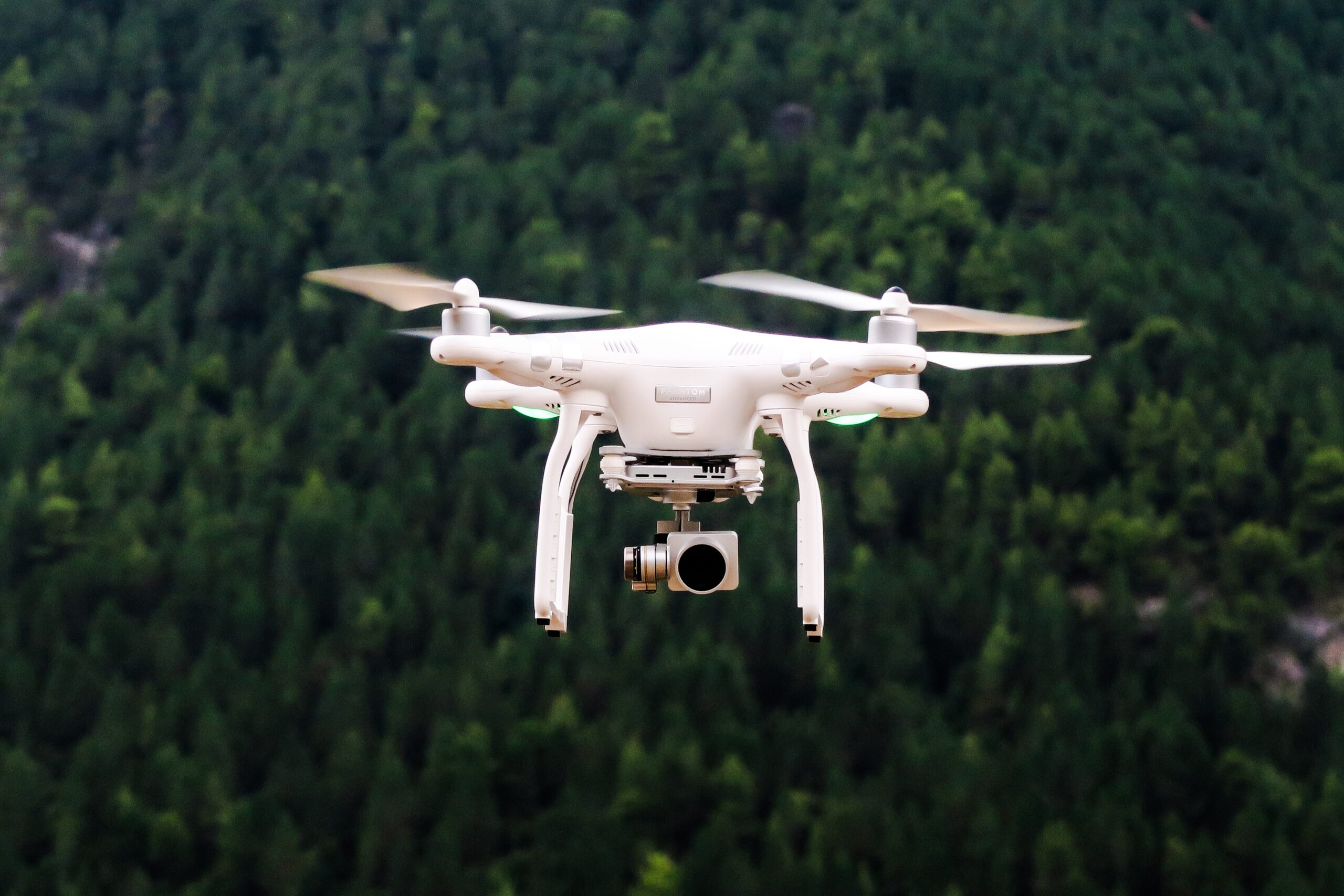 Photo by Jason Blackeye on Unsplash
Photo by Jason Blackeye on Unsplash India’s Karnataka state government intends to include drones in its new aerospace and defense policy, and the state government wants to encourage investment in early technology for wider use.
The draft directive also outlines plans for new investments or expansion of existing companies in Bengaluru’s aerospace and defense sector, people involved in the discussion.
All recent government actions offer incentives and concessions only for investments in areas other than Bengaluru. This change in attitude indicates that the government wants to include national technology capital in its incentives. That’s because it’s home to a vibrant ecosystem of defense and aerospace industries, with a 1,200-acre cluster popping up near Kempegowda International Airport.
The Industry Department, in consultation with other departments, has completed the draft and it has been approved by the Cabinet.
Karnataka accounts for 40 percent of India’s defense electronic systems and products, Industry Minister Murugesh R. Nilani said. “Our stimulus package will continue to boost the sector,” he told ET, adding that the state targets $6 billion in investments for him over the next five years.
The new policy recognizes the changing dynamics of the sector and will be in line with the Aatmanirbhar program and emerging global trends. After the government established Hindustan Aeronautics Ltd in the 1940s, Bengaluru established itself as India’s largest aerospace cluster excluding the IT/BPO sector and had ambitions to become an aerospace hub in Asia. I am here.
At the Aero He India exhibition in Bangalore last year, the state government signed 34 MOUs with aerospace and defense companies.
The government plans to establish Bengaluru, Belagavi, Mysuru, Tumakuru and Chamarajanagara as aerospace and defense centers in the next five years, Mr Nirani said.
Aequs operates in Belagavi Aerospace Cluster, India’s first special aerospace economic zone, operated by Aequs Infra.
Karnataka’s new policy comes as the Center is building industrial corridors for defense in Uttar Pradesh and Tamil Nadu. State policy will focus on his four main areas of final assembly, aerospace, and defense-related electronics. maintenance, repair, overhaul. and additive manufacturing.
The policy will provide huge land and financial stimulus packages to space, defense and aerospace manufacturers and their subsectors, the minister said.
For example, the Electronic Systems Design and Manufacture Directive (ESDM) provides capital subsidies of 25% for land and 20% for factories and machinery, apart from 1% Production Linked Incentive (PLI) and other SOPs. We provide money to investors. Including electricity tax exemption and electricity rate discount. Aerospace and defense policies will have similar SOPs, but the numbers may differ, officials involved in the discussion said.
- 0 views
- 359 answers
- 0 votes
-
Asked on 25th August 2022 in No Category.
The past two years have been a major challenge for the global aerospace industry. Ripple effects were also felt in the Indian aerospace industry. All private and commercial flights have been grounded for as long as possible, and the business leader has made two of his commitments to weathering COVID-19 and maintaining the sector’s resilience in the face of this crisis. I am facing one challenge.
If 2021 was a year of recovery, 2022 will be a turning point. Globally, cash flow and investment in space technology companies is increasing, an industry that has long been considered too risky for serious investment. This has also led to increased investment in aerospace. In India, policy interventions in government programs such as UDAN and national programs such as Atmanirbhar Bharat focused on strengthening regional connectivity and aviation infrastructure will enable the private sector to develop core competencies and accelerate R&D. Abundant opportunities have opened up for (R&D) and investment in domestic manufacturing.
The pandemic has also accelerated the adoption of new technologies at an unprecedented rate. This is driving further demand in areas such as data science, cloud computing, cybersecurity, artificial intelligence (AI), machine learning (ML), and big data analytics. Companies are now investing in expanding their portfolios and digitizing their processes.
Innovation is the foundation of every industry. As we move into a future littered with revolutionary new realities such as air ride sharing and self-driving cars, the rapid adoption of advanced technologies will unlock fundamental efficiencies and operational advantages that were previously unthinkable. brought. These technologies will take hold and redefine the future of transportation. At the design philosophy level, companies are slowly moving away from designing hardware products and focusing on software applications that solve problems. Therefore, the promise of affordable mobility for commercial, civilian, and aerospace military applications is deeply embedded in software.
In the field of product design, AI algorithms will evaluate and streamline design and manufacturing systems faster. In addition to making the system more energy efficient, the combination of AI-powered generative design and 3D printing enables aesthetic and practical designs. In addition, AI-powered cloud-based applications make maintenance simpler and easier.
Urban Air Mobility (UAM) and Advanced Air Mobility (AAM) are the next big disruptors in aviation and India has great potential to lead its design and development. Next-generation innovations consist of an ultra-compact fly-by-wire control system and an ultra-compact radar system with detection and avoidance. Above all, the technology does more than just enable autonomy and urban airborne mobility. It also has applications in other industries.
According to industry group NASSCOM, India is a hotbed of R&D and digital talent. India’s technology research and development services sector is expected to reach $63 billion by 2025 from $31 billion in 2019. Continuous innovation, a large digital talent pool and differentiated service delivery. India has one of the world’s largest R&D talent pools to meet the scalability needs of global companies.
Retraining and upskilling, both in the private and public sectors, should be a top national priority in developing and developing the right workforce for the aviation industry and establishing itself as the new global leader in the field. Collaboration between industry and academia, including joint R&D initiatives, curriculum design, and internships, is key to developing a future-ready workforce.
The global aviation industry was also an early adopter of cleaner fuels. Significant progress has been made in developing sustainable aviation fuel (SAF) as a drop-in replacement for fossil-based aviation fuel. We are also developing an SAF that is a 100% substitute for the existing kerosene.
To achieve carbon neutrality in aerospace, companies are focusing on sustainable propulsion alternatives as well as incremental technology improvements and operational efficiencies. SAFs made from renewable sources such as biomass currently reduce carbon emissions by 70-80%. Environmental, Social and Governance (ESG) priorities are also now becoming an integral part of corporate governance. Finally, as some signatories to climate change conventions (such as the recently concluded COP26) have begun to encourage “test and learn” mechanisms and promote sustainability through industry certification, A wide range of key players are focused on achieving sustainability goals across single organizations, industries and economies.
India’s aviation sector is experiencing healthy growth owing to rising revenues, a growing middle class, competition among budget airlines, investments in airport infrastructure and supportive government policies. The country is expected to become the world’s third largest aviation market by 2024.
Big leaps are expected as companies move beyond increasing profits to an era of exploration through next-generation product and service innovation. By putting innovation at the forefront, organizations can focus on managing their workforce and strengthening their global footprint while maintaining a high level of technical management capability. The move from bricks to chips and the convergence of the internet and computer technology has greatly optimized costs and processes in the aerospace industry. As these technologies mature and become smarter, not only will the ecosystem grow, but so will our mobility concept as a whole.
- 0 views
- 359 answers
- 0 votes
-
Asked on 25th August 2022 in No Category.
Russian state-owned leasing company GTLK is setting up an unmanned aerial vehicle operator to capitalize on the growing market for drone services. This operator was founded in collaboration with the National Technology Initiative, a program to stimulate the cybernetics industry in Russia. According to GTLK, the global unmanned aerial services industry is projected to grow 25% annually through 2030, making him worth $45 billion by mid-decade. However, the size of the Russian market is now “an order of magnitude lower” at about 11 billion rupiah (US$183 million), they say. adds that the sector is experiencing “limiting factors” including lack of legal and technical regulations, especially in the areas of certification, training and serial production. New operator strategies include the development of digital platforms that enable interaction between market participants. By 2027, several popular drones will be certified and at least 2,000 pilots will be trained.
“The new operator aspires to become a consolidator and integrator, pioneering the market for the production and use of drones in operations,” said GTLK.
We look forward to facilitating coordination among suppliers, regulators, customers and law enforcement to help resolve some of the industry’s most pressing issues. GTLK believes that by 2025, it will be able to put its regulatory and technical framework in place, implement business support mechanisms, and enter a stage of sustained growth by the end of the decade.
- 0 views
- 359 answers
- 0 votes



